An Ancient History X Exclusive
The Lighthouse of Alexandria, one of the Seven Wonders of the Ancient World, has captivated historians and archaeologists for centuries. In May and June 2025, the Centre d’Études Alexandrines (CEAlex) led a groundbreaking mission off Egypt’s coast. Drawing on insights from Director Thomas Faucher, shared exclusively with Ancient History X, they retrieved 22 massive underwater blocks. This marked major progress in the “Pharos” program, which aims to digitally reconstruct the iconic lighthouse. The effort unlocks architectural secrets of the ancient wonder using advanced digital tools. Backed by La Foundation Dassault Systèmes, the operation was authorized by Egypt’s Ministry of Tourism and Antiquities. The project merges cutting-edge tech with careful archaeological research to revive the lost marvel.
A Monumental Discovery Beneath the Waves
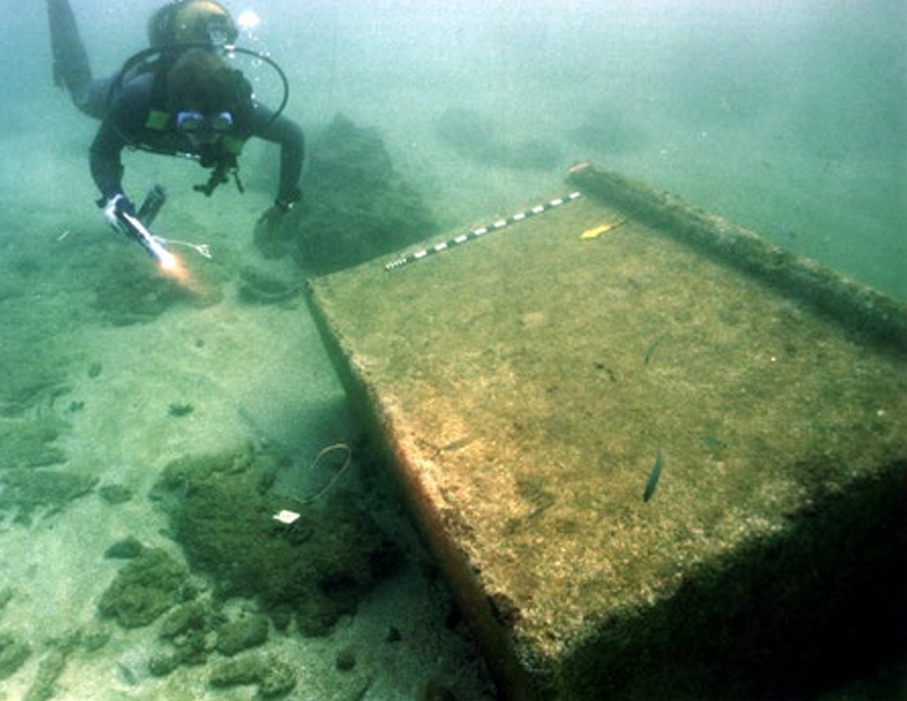
Constructed in the early third century BCE under Ptolemy I, the Lighthouse stood on Pharos Island. It guided ships to Alexandria’s busy port, rising around 100 meters. Its beacon reflected Alexandria’s dominance in Mediterranean trade. The lighthouse’s innovative design secured its place among the Seven Wonders.For over 1,600 years, it endured earthquakes, storms, and time until its collapse in 1303 CE. By 1477, its stones were quarried for the Qaitbay Fortress, leaving only submerged remnants.
Archaeological exploration began in the 1960s with Kamel Abul Saadat, followed by Honor Frost in 1968. In the 1990s, Jean-Yves Empereur, then CEAlex director, began underwater excavations of the Lighthouse of Alexandria’s submerged ruins. The aim was to protect them from damage caused by modern restoration and coastal works at the Qaitbay Fortress. This 15th-century citadel was built in 1477 atop the lighthouse’s original site. The mission uncovered thousands of architectural blocks, confirming the ancient wonder lay beneath the sea.
Extracting the Lighthouse’s Secrets
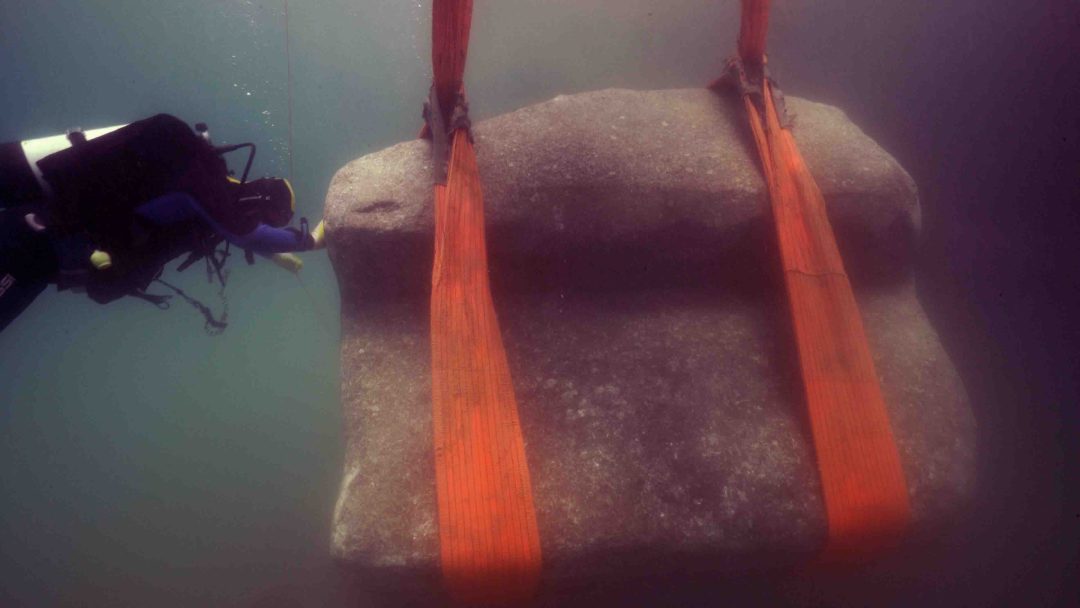
A Complex Operation
In May and June 2025, Isabelle Hairy’s team lifted 22 massive blocks from the Lighthouse of Alexandria. These included monumental door lintels, jambs, a threshold, and base slabs. They also recovered elements of a previously unknown pylon. It featured an Egyptian-style door crafted using Hellenistic techniques.
Thomas Faucher, Director of the Centre d’Études Alexandrines, described the effort to Ancient history X: “The extraction of these massive components required complex logistics, including a dedicated boat, platform, and crane, and also provided an opportunity to study the layers beneath these immense blocks.” This setup enabled 3D scanning of previously inaccessible surfaces.
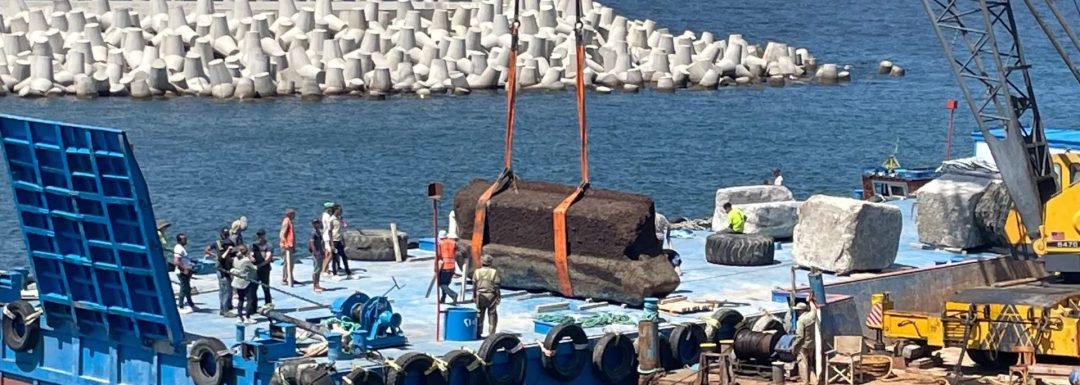
The blocks, some weighing 40 to 50 tons, required careful handling to preserve their integrity. After scanning, the team returned them underwater, as Faucher noted: “The blocks, once scanned out of the water, were carefully placed back underwater to ensure their long-term integrity while awaiting a comprehensive plan from the Egyptian Authorities.” This approach ensures preservation while awaiting potential display plans.
Unlocking Architectural Mastery
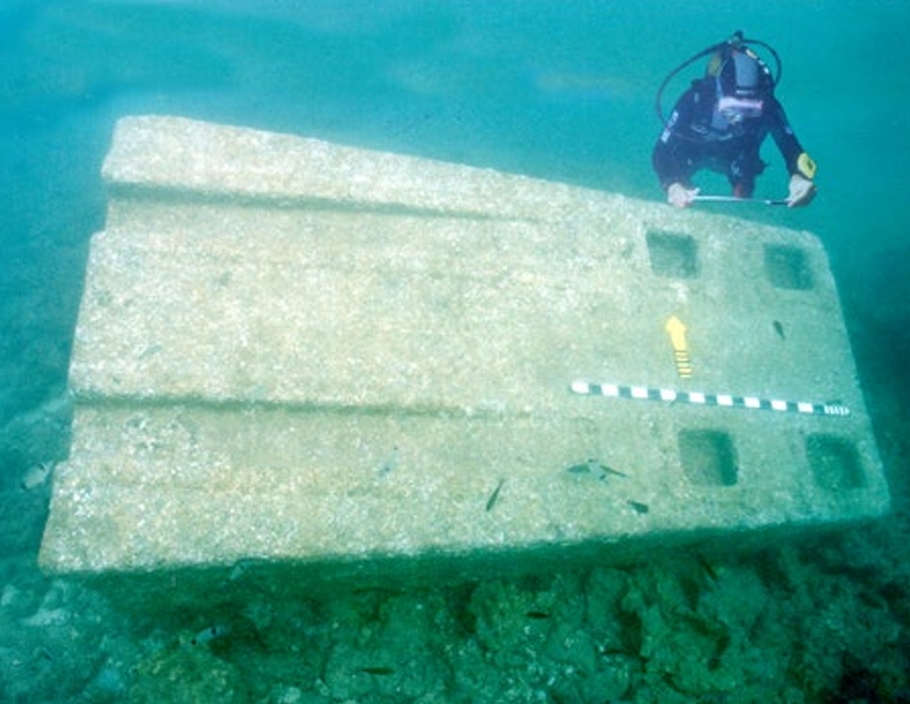
The 22 blocks retrieved in 2025 from the Lighthouse of Alexandria offer a vivid glimpse into its sophisticated construction techniques, revealing the engineering prowess that sustained this ancient wonder for over 1,600 years.
Thomas Faucher, Director of the Centre d’Études Alexandrines, told Ancient History X: “To date, over 5,000 blocks have been recorded, and more than a hundred of the most significant pieces have undergone individual scanning.” This effort, spanning since the 1990s, has allowed researchers to study the blocks’ design and function through 3D scans.
The 2025 campaign targeted massive components, including a 13-meter-high door crafted from three granite monoliths, likely part of the lighthouse’s monumental entrance. These blocks demonstrate the builders’ ability to quarry, transport, and assemble colossal stone elements with precision.
Archaeological Evidence
Archaeological evidence, documented by CEAlex, shows that the lighthouse’s builders used metal clamps and dowels, iron or bronze fittings embedded in the granite blocks, to secure them against coastal erosion and frequent earthquakes in the region. These metal reinforcements, inserted into carved slots, distributed structural stress, ensuring the Lighthouse of Alexandria’s stability for centuries. This technique, noted in studies of the underwater ruins, reflects advanced metallurgical and masonry skills uncommon in the third century BCE.
The pylon discovery adds a new dimension to the lighthouse’s design. This tower-like structure framed grand entrances in ancient Egyptian architecture. It featured a door with Egyptian-style reliefs carved in Hellenistic Greek techniques. The stylistic blend highlights Alexandria as a cultural crossroads of Pharaonic and Greek aesthetics. Found among the 2025 blocks, the pylon likely symbolized Ptolemaic power. Its presence suggests the lighthouse incorporated meaningful design elements. Seismic damage and quarrying after 1303 CE also offer clues to its collapse. The structure likely fell due to earthquakes, tsunamis, and neglect after deactivation.
The Pharos Program: Rebuilding a Wonder Digitally
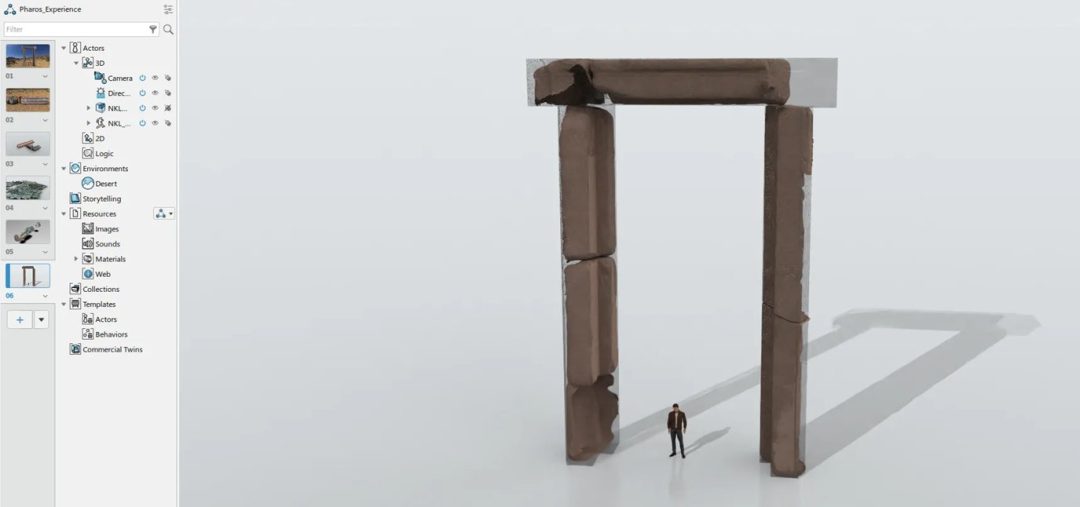
The “Pharos” program, funded by La Fondation Dassault Systèmes and led by Isabelle Hairy, aims to create a digital twin of the Lighthouse of Alexandria.
Thomas Faucher, Director of the Centre d’Études Alexandrines, explained to Ancient History X: “For the past two years, Isabelle Hairy and the CEAlex team have been collaborating with the Dassault Systèmes Foundation on a virtual anastylosis of the Lighthouse of Alexandria.”
This virtual anastylosis integrates physical remains, ancient texts, and medieval iconography to reconstruct the monument from its third-century BCE origins to its medieval state. Volunteer engineers at Dassault Systèmes use simulations to test construction and collapse theories, assembling a giant archaeological puzzle. The model will allow virtual exploration, recreating the lighthouse’s original splendor for users worldwide.
The Pharos program unites historians, numismatists, archaeologists, and architects. Together they analyze sources from the fourth century BCE to the lighthouse’s final mention in 1435. These records compensate for fragmented remains, quarried after 1303. The team’s work reveals the lighthouse’s evolution, including repairs before its collapse due to earthquakes, tsunamis, and neglect. This approach ensures a comprehensive reconstruction of the Lighthouse of Alexandria, capturing its exterior and interior complexity.
Preserving the Past, Inspiring the Future
Blocks from the 1990s excavations are displayed at Alexandria’s Kom el-Dikka site, connecting visitors to the lighthouse’s legacy. To protect these monumental finds, the 2025 campaign prioritized preservation by returning the scanned blocks to their underwater resting place. Meanwhile, decisions from Egyptian authorities are still pending regarding potential exhibitions — especially for the remarkably intact door jambs This strategy balances scientific study with artifact protection.
GEDEON Programmes, a partner in the 1995 rescue mission, funded the 2025 barge and crane. Their team, led by director Laurence Thiriat, filmed the operation for a 90-minute documentary set to air on France Télévisions. Building on their 1995 film The Seventh Wonder of the World, which was broadcast internationally on BBC, PBS, and other networks, this new documentary will showcase the technological innovations of the Pharos program and the dramatic spectacle of the lifting operation.
The Lighthouse’s Enduring Legacy
The Lighthouse of Alexandria, humanity’s first skyscraper, embodied Ptolemaic ambition and engineering prowess. Its light guided sailors and illuminated Alexandria’s cultural dominance. Though its physical form vanished, the 2025 excavations and Pharos program ensure its story endures. By blending archaeology with virtual reality, the project revives one of the Seven Wonders of the World, inspiring future generations to explore science, history, and technology. The Lighthouse of Alexandria shines anew, a testament to human ingenuity and collaboration.

